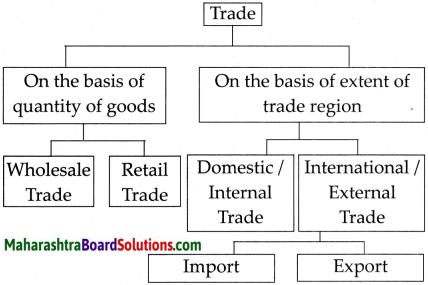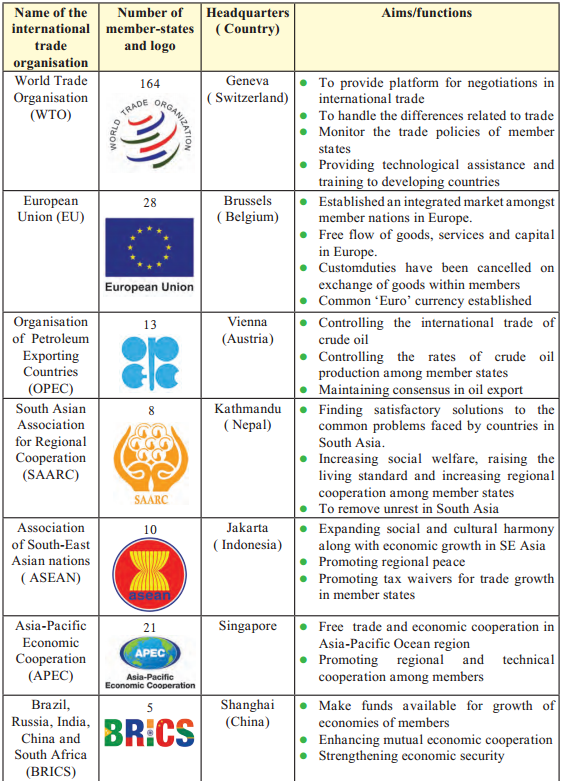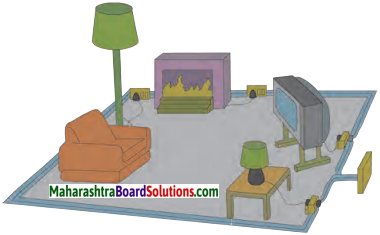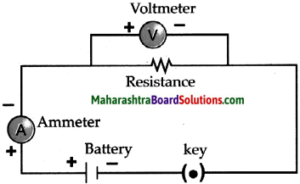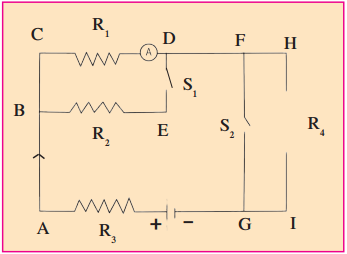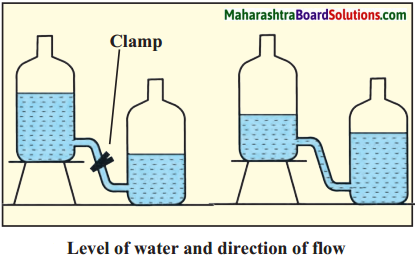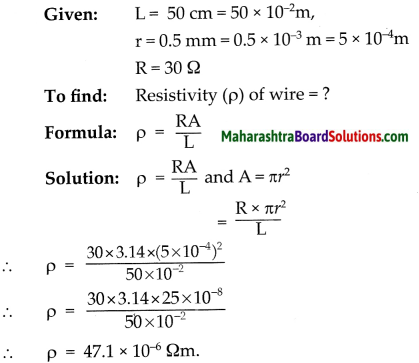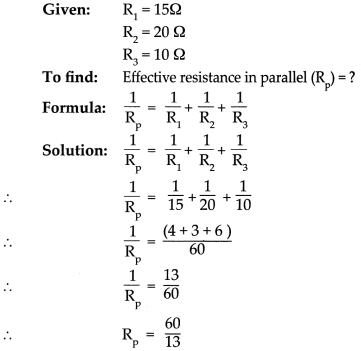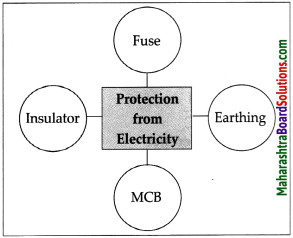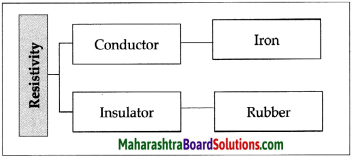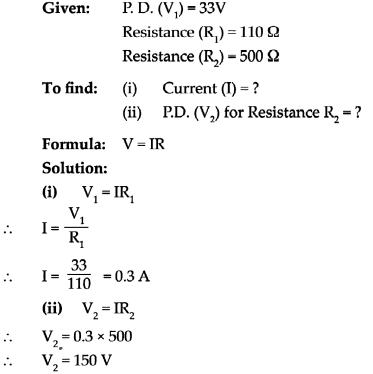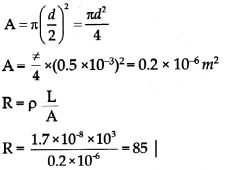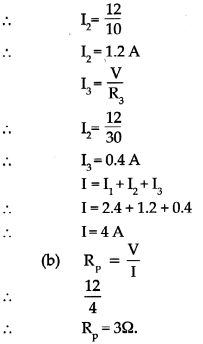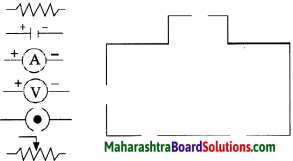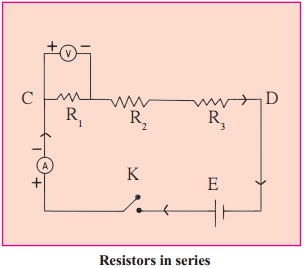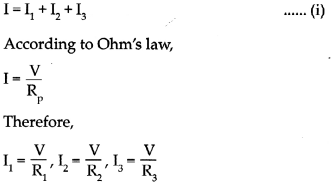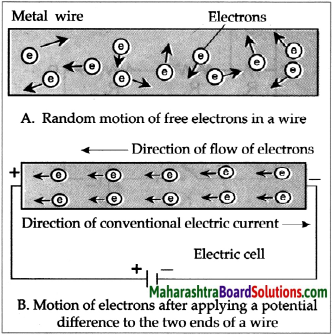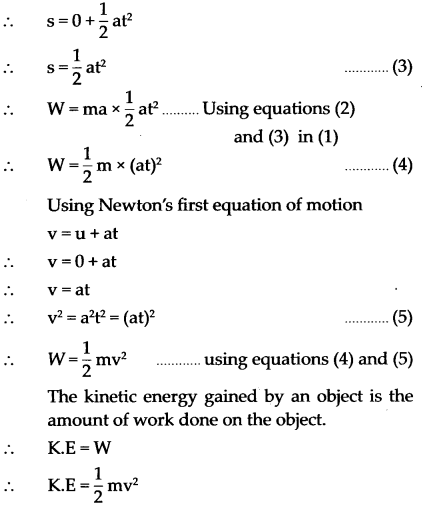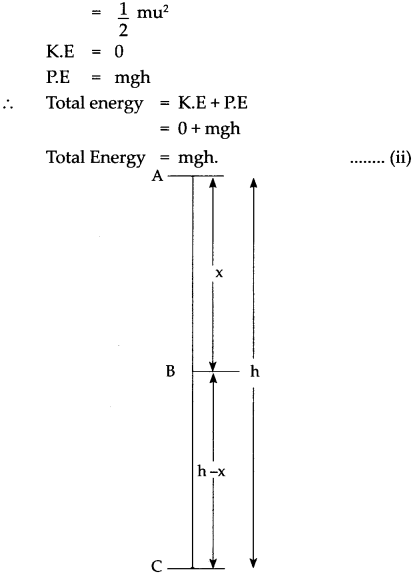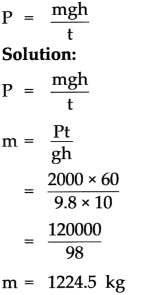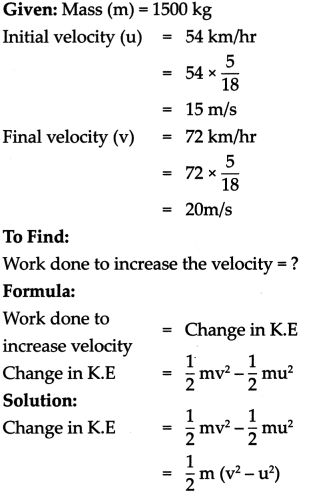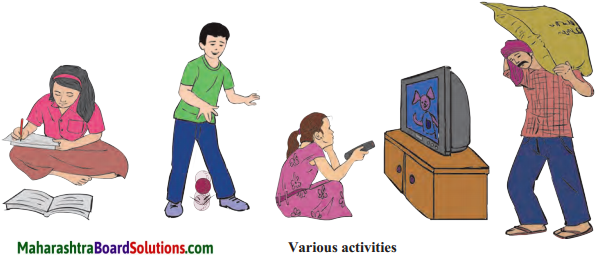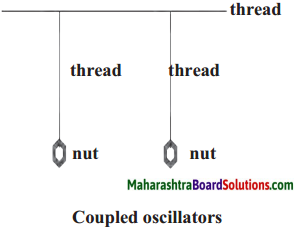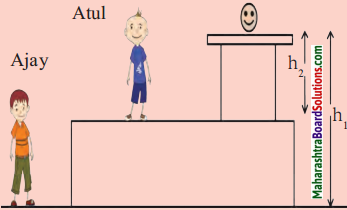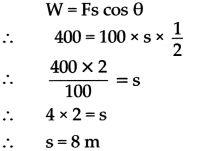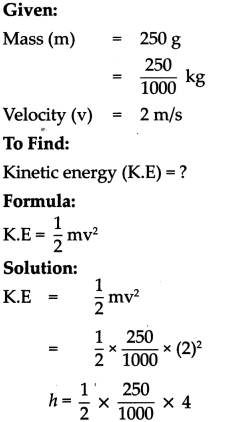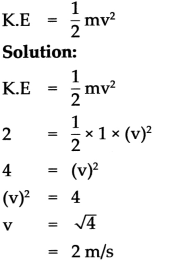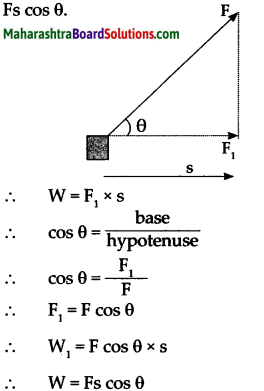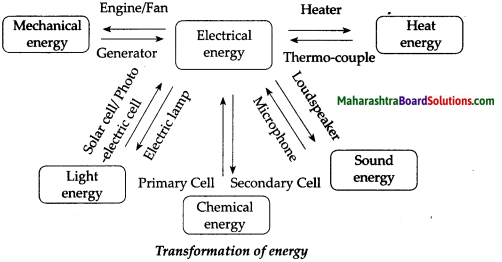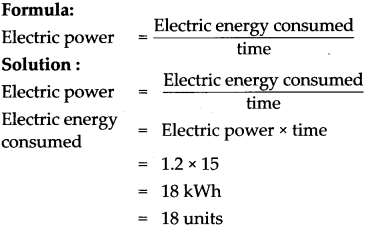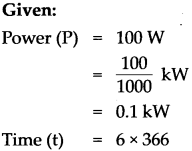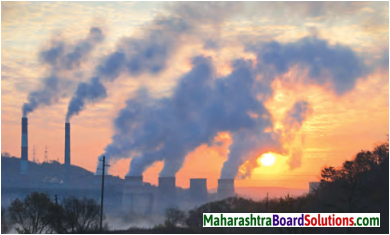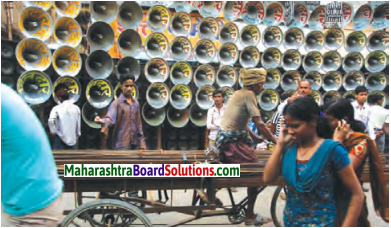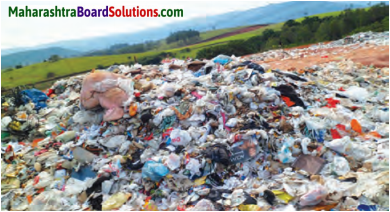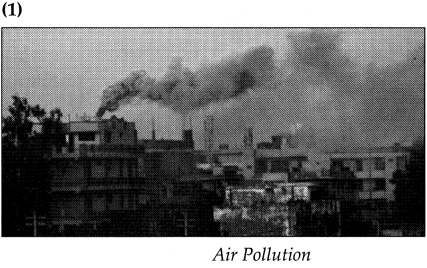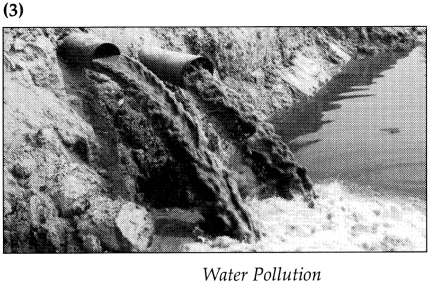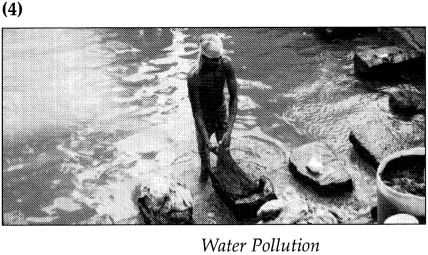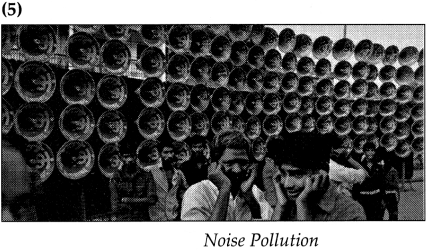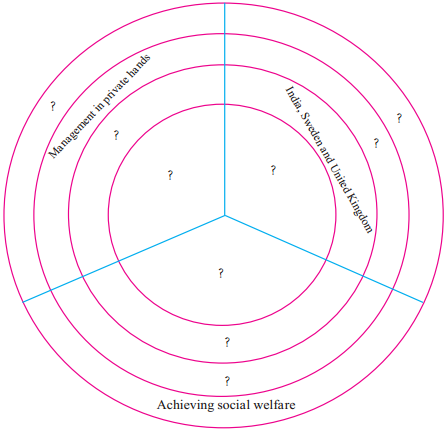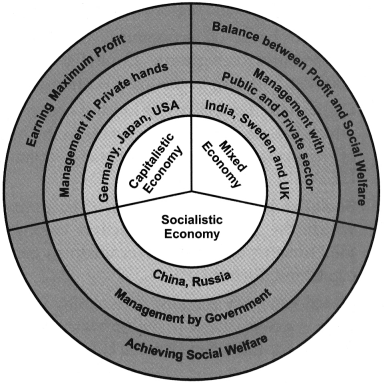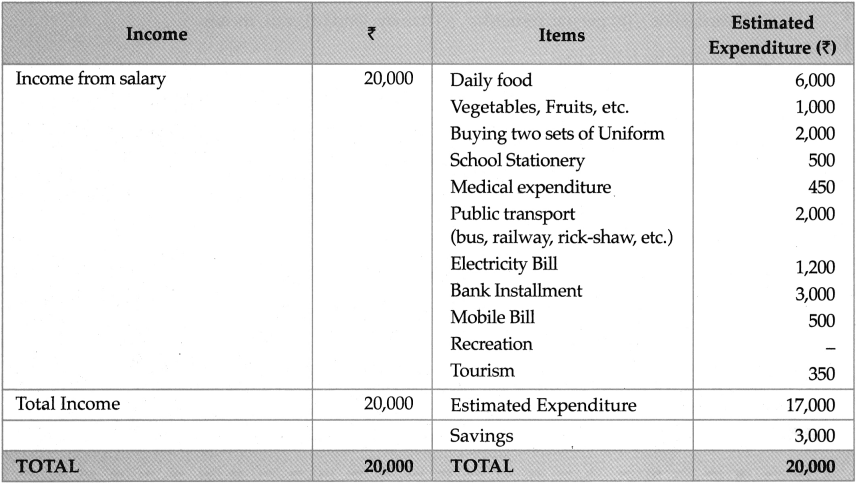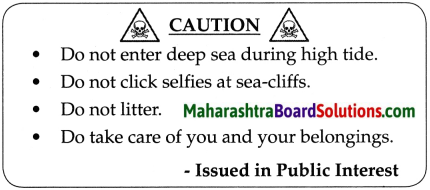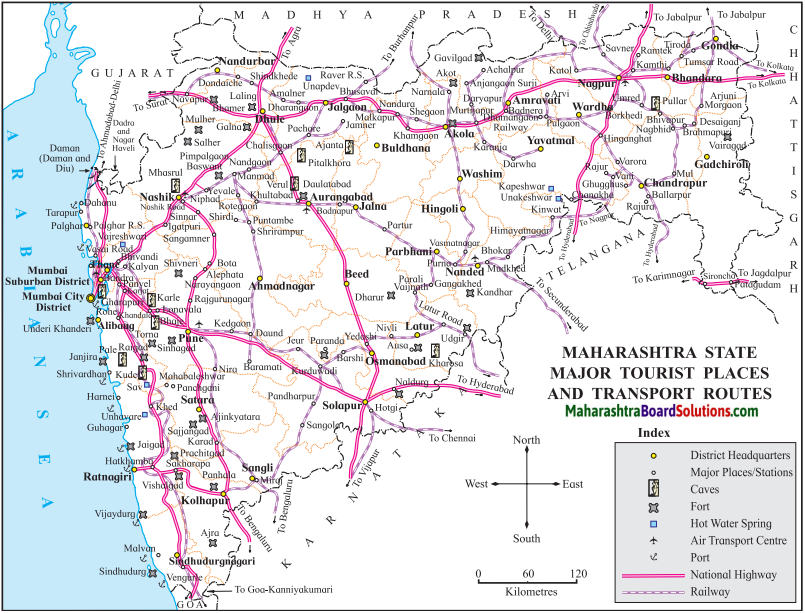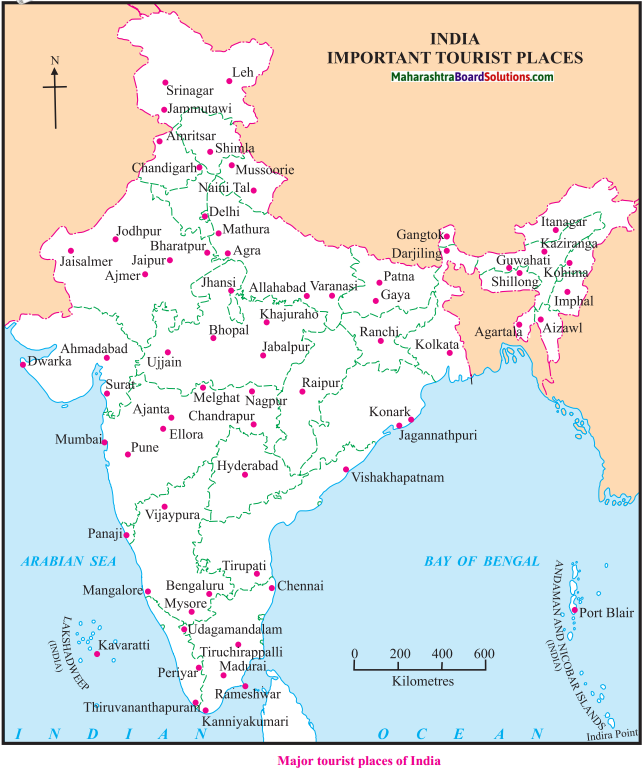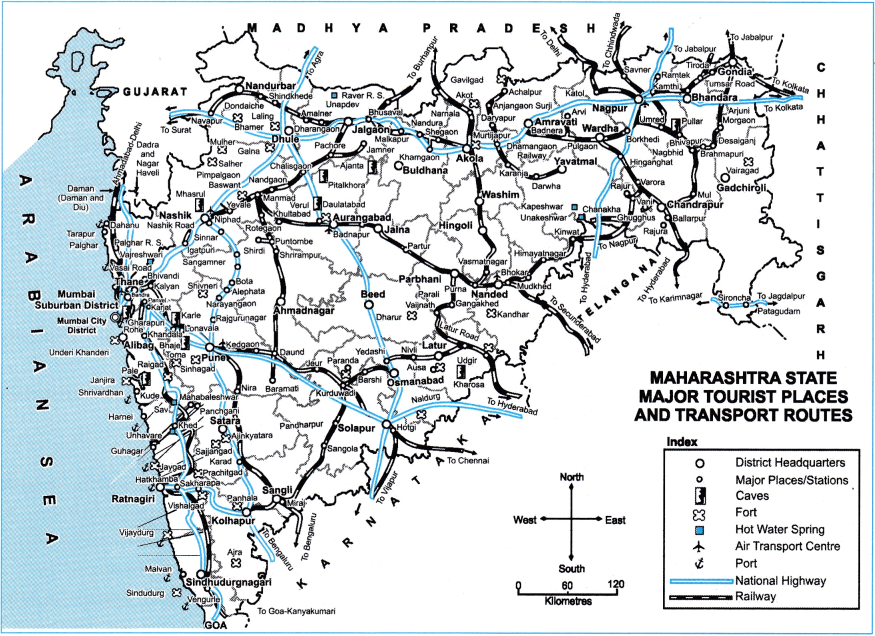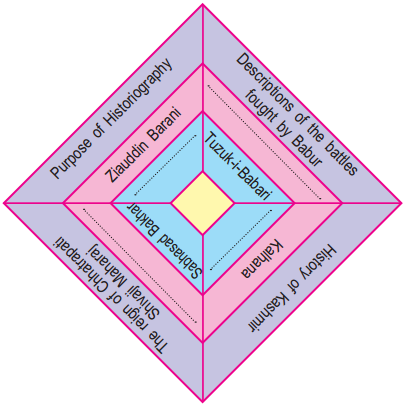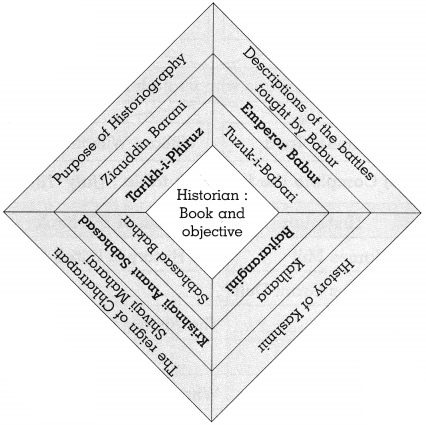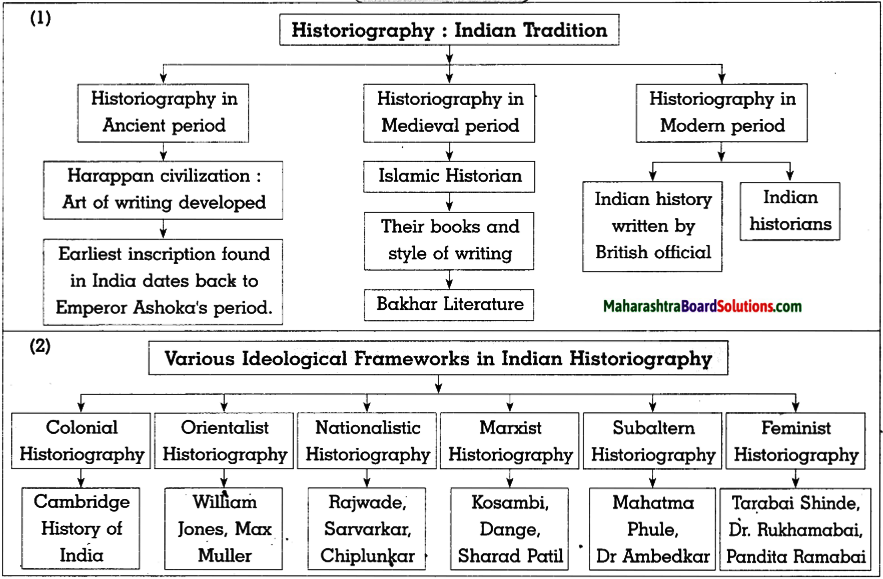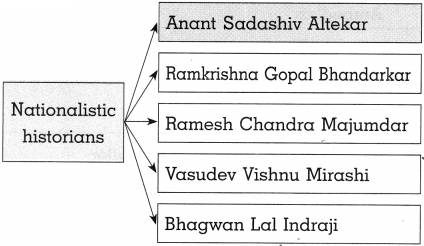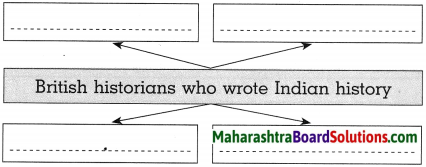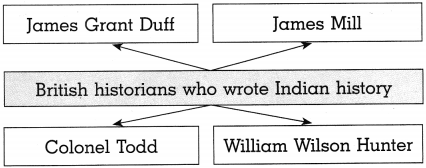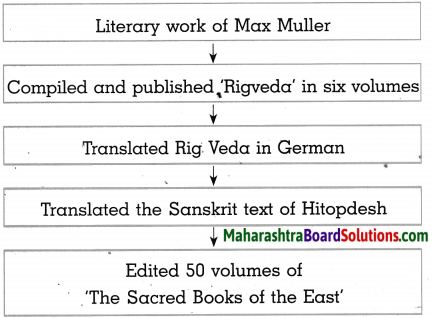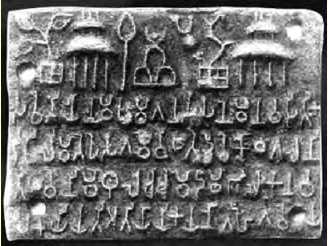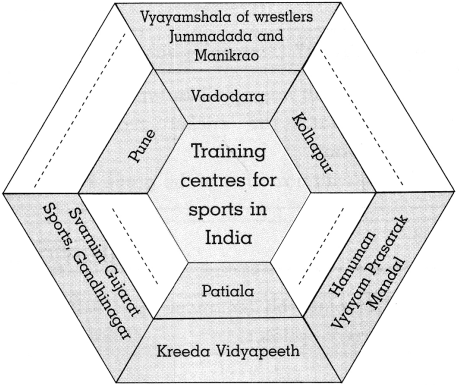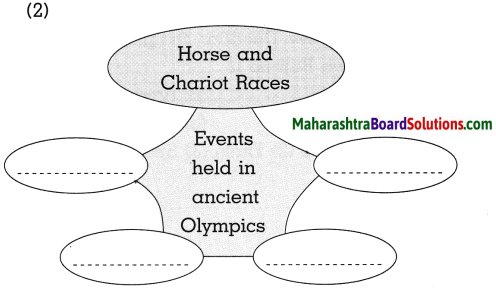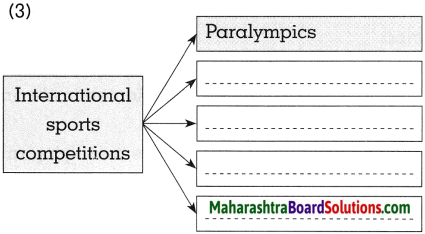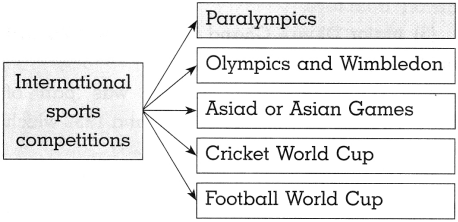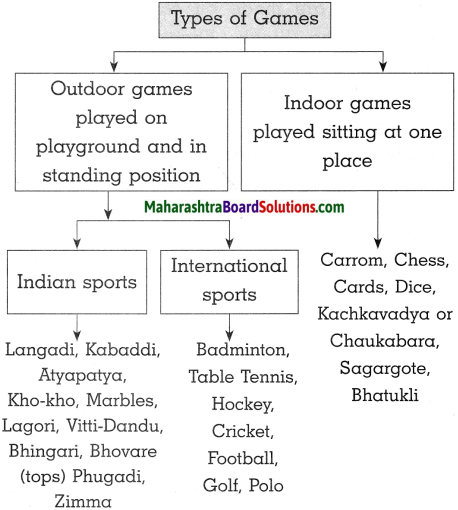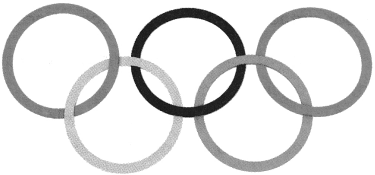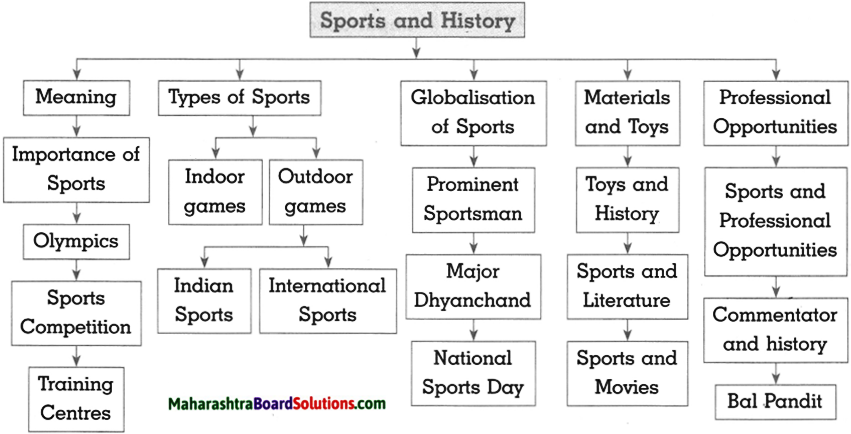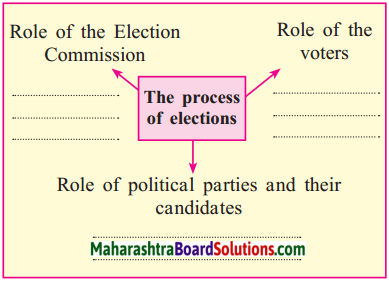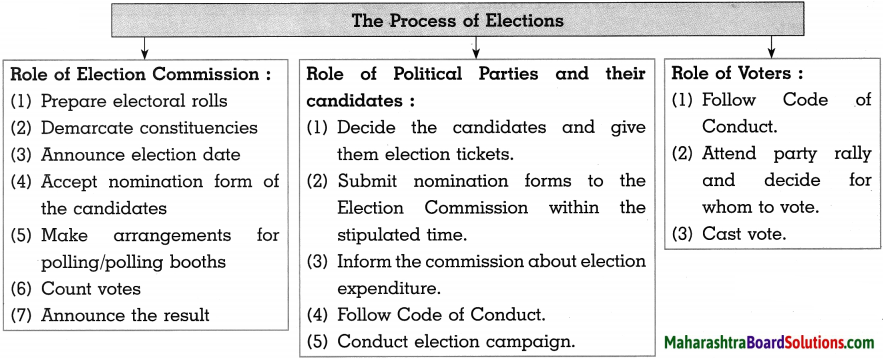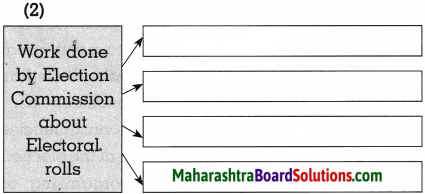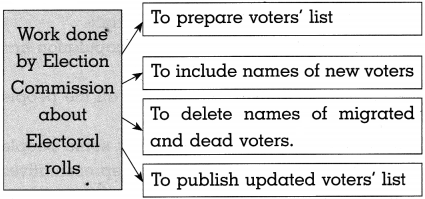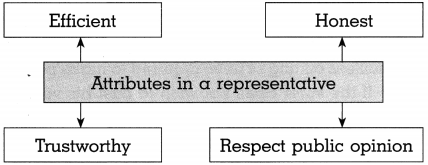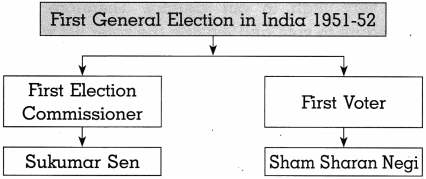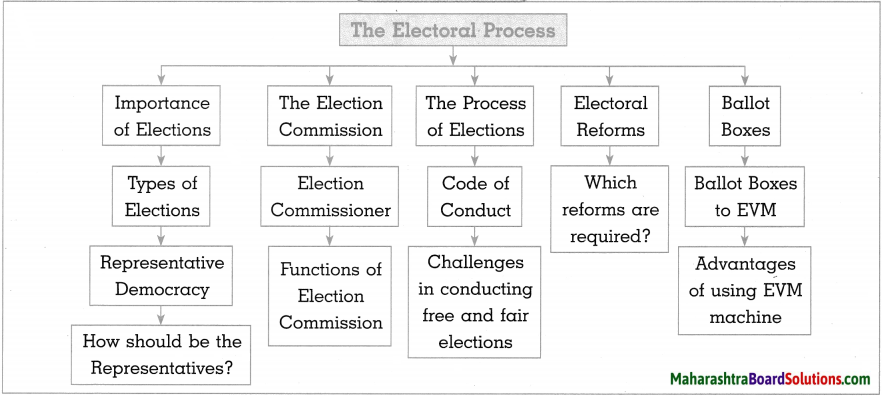Balbharti Maharashtra State Board Class 9 Geography Solutions Chapter 11 Transport and Communication Notes, Textbook Exercise Important Questions and Answers.
Maharashtra State Board Class 9 Geography Solutions Chapter 11 Transport and Communication
Class 9 Geography Chapter 11 Transport and Communication Textbook Questions and Answers
1. Differentiate between:
(A) Railways and roadways
Answer:
| Basis | Railways | Roadways |
| (1) Carrying Capacity | Carrying capacity is more | Carrying capacity is limited |
| (2) Distance | Suitable for long distances | Suitable for short distance |
| (3) Door to door service | Railway does not provide door to door service. | Roadways provide door to door service. |
| (4) Traffic | There is no problem of traffic jam on railways. | There is a problem of traffic jam on roadways. |
| (5) Pollution | Railways do not create a problem of air pollution. | Roadways create a problem of air pollution. |
(B) Transportation and communication
Answer:
| Basis | Transportation | Communication |
| (1) Meaning | Transportation is the movement of humans, animals and goods from one location to another. | Communication is the exchange of information, ideas and messages by speaking, writing or some other medium. |
| (2) Means | It is done through railways, roadways, waterways, airways and pipelines. | It is done through telephones, mobiles, video-conferencing, email and post etc. |
| (3) Threats | The threats like a traffic jams, accidents, noise pollution, air pollution are associated with transportation. | The threats like technical issues, cyber crimes, etc. are associated with the communication. |
(C) Conventional and modern means of communication.
Answer:
| Basis | Conventional means of Communication | Modem means of Communication |
| (1) Meaning | The means of communication – used since olden times – conventional means of communication. | The means of communication – used in modern times – modern means of communication. |
| (2) Examples | Letter, newspapers, radio, television. | Mobile phone, internet, etc. |
| (3) Interaction | May not facilitate the direct interaction between – sender and receivers of information. | Facilitates the direct interaction between – sender and the receivers of information. |
2. Answer in detail:
Question 1.
‘Newspapers are used for communication’. Explain the statement.
Answer:
- The news related to economic events, politics, social issues, culture, education, etc. are published in newspapers.
- Newspapers arecheap means of communication. Through newspapers information gets spread to masses at a time.
- Newspapers are published in various languages.
- In this way, newspapers are used for communication.
Thus, newspapers are used for communication.
![]()
Question 2.
Explain how T.V. is a cheap means of communication.
Answer:
- Various programs, serials, etc. related to entertainment, social issues, culture, education, politics, economic events, sports, weather conditions, etc. are broadcasted on television.
- Through television the information is exchanged to masses at a time with high speed.
- Television can broadcast both audio and video for communication. In this way, television is a cheap means of communication.
Thus, TV is a cheap means of communication.
Question 3.
What types of communications can be done through mobiles?
Answer:
- Calling and SMS (Short message system) facilitates easy one-to-one communication, using mobiles anywhere and at any time.
- Video conferencing and applications like ‘Whatsapp’ allow one to communicate with many people simultaneously.
- Various functions like, money transfer, payment of bills, purchase of goods and services and online trading can be done using smart phones’ various apps like BHIM, SBI anywhere, etc.
- Internet and social media can also be accessed through mobile phones.
3. Name them on the basis of the given information:
Question 1.
Five cities with airways services in Maharashtra
Answer:
Mumbai, Pune, Nagpur, Kolhapur, Aurangabad, Nashik and Nanded.
Question 2.
Services available in post offices
Answer:
- Financial Services: Saving schemes, insurance services and mutual fund.
- Mail services: Speed post, postcard, parcel and courier.
Question 3.
National Highways near your area
Answer:
- Mumbai- Goa Highway (NH 66)
- Mumbai- Bangaluru highway (NH 04)
- Mumbai- Agra Highway (NH 08)
Note: Answer may vary.
Question 4.
Ports along the coast of Maharashtra
Answer:
- Malvan
- Venture
- Vasai
- Dahanu
- Gharapuri
![]()
4. Identify the relation and match the columns making a chain
| Group ‘A’ | Group ‘B’ | Group ‘C’ |
| (1) Postal services | Roadways | Speed post |
| (2) Shivneri | World network of connected computers | Exchange of information |
| (3) Internet | Conventional means of communication | Comfortable journey |
| (4) RoRo transport | Railways | Energy, time and labour saving |
Answer:
| Group ‘A’ | Group ‘B’ | Group ‘C’ |
| (1) Postal services | Conventional means of communication | Speed post. |
| (2) Shivneri | Roadways | Comfortable journey. |
| (3) Internet | World network of connected computers | Exchange of information. |
| (4) RoRo transport | Railways | Energy, time and labour saving. |
5. Read the following maps and answer the questions:
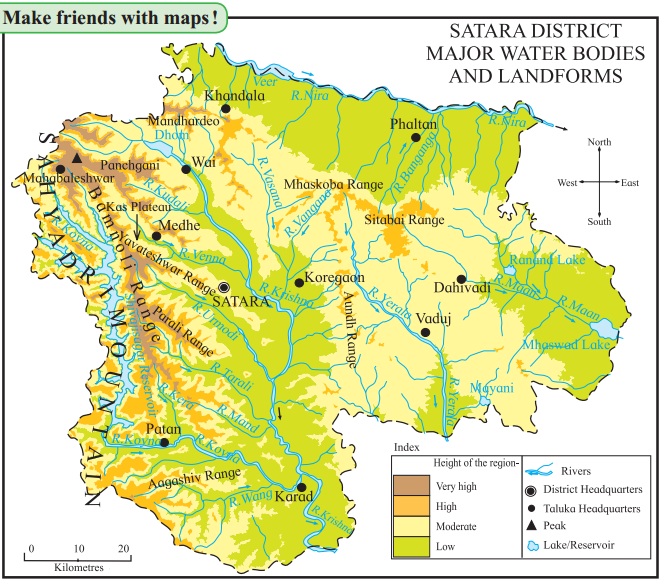
Question 1.
In which region do you find a dense network of transport routes in the map?
Answer:
The central part of the district has dense network of transport routes.
Question 2.
How is the physiography of the region with dense network?
Answer:
The central part of the district has lower and medium elevation as compared to the Western part.
Question 3.
Which region has a sparse network of transport routes?
Answer:
The transport network is sparse in the Eastern part of the district.
Question 4.
How is the physiography of this region?
Answer:
The region with sparse network of transport . routes is comparatively of lower and medium elevations.
Question 5.
Look for the region lacking transport routes.
Answer:
The Western region lacks transport routes.
![]()
Question 6.
What kind of obstruction can you find there?
Answer:
Sahyadri Mountains and Shivsagar reservoir of Koyna dam are the obstructions found here.
Class 9 Geography Chapter 11 Transport and Communication Intext Questions and Answers
Let’s Recall
Complete the following table:
| Transport | Means of | Used for |
| Route | Transport | |
| Roadways | Rickshaw | Passengers |
| Roadways | Trucks | |
| Metro | ||
| Waterways | ||
| Helicopter | ||
| Airways | ||
| Submarine | ||
| Waterways | Freight | |
| Mules | ||
| Railways | ||
| Pipelines |
Answer:
| Transport | Means of Transport | Used for |
| Roadways | Rickshaw | Passengers |
| Roadways | Trucks | Goods |
| Railways | Metro | Passengers |
| Waterways | Cruise/Boats | Passengers |
| Airways | Helicopter | Passengers |
| Airways | Aeroplane | Passengers |
| Waterways | Submarine | Defence & Research |
| Waterways | Cargo-ship | Freight / Goods |
| Roadways | Mules | Goods |
| Railways | Cargo goods train | Goods |
| Pipelines | Pipes | Oil, Water and Gas |
Can you tell?
We have given some specific conditions. In this context, tell with reasons which means of transport route will you take?
![]()
Question 1.
You have to reach Bhopal from Nagpur due to some emergency.
Answer:
Airways : As it is the fastest mode of transport.
Question 2.
You have to reach Kanyakumari carrying the message of cleanliness. There is no time limit for it.
Answer:
Roadways : Since roadways connect even the remotest places the message can reach to all persons.
Question 3.
Send the Alphonso mangoes from Konkan to Arab countries.
Answer:
Airways – Since mango is a perishable commodity, the fastest mode of transportation is used. ,
Question 4.
Indrayani variety of rice has to be exported from Pune to Cape Town of South Africa at low expenditure.
Answer:
In such conditions, we will choose waterways as a route and ship as a means of transport. Because rice is comparatively durable agricultural good in the given situation it has to be transported at low cost.
Question 5.
Large-scale production of vegetables in Nandurbar has taken place but is not fetching a good price. The Nagpur-Surat National Highway and the Surat-Bhusawal Railway line passes through the district.
Answer:
In a given situation, we will choose roadways and railways as a route and truck and goods’ ways/train respectively as a means of transport. Because the highway and railway line that pass through the district, connects the important towns and cities from the district.
Question 6.
You have to go to Singapore from your village/ town. You have 10 days to do the same.
Answer:
Roadway and Airways: I will first reach the nearest airport of a city by road and then take an Airway. It is the fastest mode of transport.
Can you tell?
Question 1.
Make a list of various means of communication you are aware of.
Answer:
Letters, radio, television, telephones, mobile phones, newspaper, internet, satellites etc. are the various means of communication.
![]()
Question 2.
How many of these do you actually use? Make a box around them.
Answer:

Question 3.
For what do you use them ?
Answer:
We use these means of communication to exchange important information, ideas, opinions etc. with friends, parents, relatives and teachers.
Question 4.
Who uses the remaining means ?
Answer:
The remaining means are used by parents, other relatives, businessmen from locality and government agencies.
Can you do it?
Observe the image and the instructions given on page 87 of the textbook and answer the following questions:
Question 1.
Which are the dates mentioned in the image?
Answer:
The dates mentioned are 15/5/2017 and 19/5/2017
Question 2.
What does the information in the image tell?
Answer:
The image informs that the person’s email account has been hacked. He cannot access his important files as they have been encrypted and to recover his files, he will have to pay a certain amount to the hacker.
Question 3.
What is the price asked for recovering the files and in what currency?
Answer:
The price asked for recovering the files is 300 US dollars in bitcoins.
![]()
Question 4.
What is the type of crime here?
Answer:
This is a cyber crime.
Give it a try
Think about the transport issues you come across during your journeys. Write the innovative changes you would suggest in the transport routes or means in your copy.
Question 1.
Congested city roads and Pollution
Answer:
Electric cars which are smaller and smarter.
Question 2.
Time-consuming travel
Answer:
Dedicated bus corridors, carpooling, more number of Expressways.
Give it a try
Question 1.
Look for the other uses of artificial satellites? Try to understand how they are related to your daily life?
Answer:
(a) The other uses of artificial satellites are as follows:
- Studying about other planets.
- Live broadcasting of a program/event from any region of the earth.
- Studying the resources on the earth’s surface.
- Regional planning.
- Planning defense strategies.
- Forecasting weather etc.
![]()
(b) The artificial satellites are directly or indirectly related to personal, social, educational, economic, cultural, political aspects in everyone’s daily life. For eg. through artificial satellites, one can enjoy a live program like award functions/cricket match, etc. on television.
Class 9 Geography Chapter 11 Transport and Communication Additional Important Questions and Answers
Complete the statement choosing the correct option from the bracket:
Question 1.
The price of the goods can be kept low if the transportation is ………….. .
(a) feasible
(b) expensive
(c) costly
(d) affordable
Answer:
(d) affordable
Question 2.
…………… growth gets a boost due to transportation.
(a) Physical
(b) Culture
(c) Economic
(d) Political
Answer:
(c) Economic
Question 3.
Freight transport through …………… is costlier than railways.
(a) trucks
(b) horses
(c) bullock-cart
(d) yak
Answer:
(a) trucks
Question 4.
The western part of Satara district is occupied by the …………… of its off shoots.
(a) Vindhyas
(b) Satpudas
(c) Sahyadris
(d) Aravallis
Answer:
(c) Sahyadris
![]()
Question 5.
The use of RORO (Roll on Roll off) services started in …………… railways in India.
(a) Goa
(b) Maharashtra
(c) Konkan
(d) Pune
Answer:
(c) Konkan
Question 6.
In the modem age, man-made …………… are an important and effective means of communication.
(a) planets
(b) asteroids
(c) satellites
(d) rockets
Answer:
(c) satellites
Question 7.
Satellite images obtained by …………… facilitate study of resources on Earth’s surface and help in regional planning.
(a) GPS
(b) radio
(c) remote sensing1
(d) drones
Answer:
(c) remote sensing
Question 8.
Communication is not just limited to talking on telephones or sending messages but …………… is also available now.
(a) tele-calling
(b) STD-Calling
(c) video-calling
(d) Local-calling
Answer:
(c) Video-calling
![]()
Question 9.
There is a correlation between transport routes and the …………… of region.
(a) soil type
(b) rainfall
(c) climate
(d) physiography2
Answer:
(d) physiography
Question 10.
Transport facilities can develop well in …………… region.
(a) mountainous
(b) plain
(c) forest
(d) plateau
Answer:
(b) plain
Question 11.
Shiv sagar reservoir of the …………… dam is located in the Satara district.
(a) Ram Krishna
(b) Bhakra-Nagal
(c) Koyna
(d) Tehri
Answer:
(c) Koyna
Question 12.
The …………… part of Satara district has a dense transport network.
(a) Western
(b) Central
(c) Eastern
(d) Southern
Answer:
(b) central.
Write answers in one sentence
Question 1.
What is transportation?
Answer:
The movement of goods and people from one place to another is called transportation.
![]()
Question 2.
Which are the different kinds of transport routes?
Answer:
Roadways, railways, waterways, airways and pipelines are the different kinds of transport routes.*
Question 3.
For what reasons does a region become devoid of any transport route?
Answer:
Due to mountains, valleys, rivers, reservoirs
- remote sensing – obtaining information regarding any place or an object without actually establishing direct contact with it is called remote sensing.
- physiography – nature and slope of land and undulating1 topography2 a region becomes devoid of any transport route.
Question 4.
Why does a dense network of transportation develop in some regions?
Answer:
A dense network of transportation develops in some regions due to lower and medium elevation, plains, flat and regular topography, etc.
Question 5.
What does Ro-Ro transport stand for?
Answer:
Ro-Ro transport is Roll-on, Roll-off transport.
Question 6.
Why was the Ro-Ro transport introduced?
Answer:
Freight transport by trucks is costlier than railways, so as a solution the Ro-Ro transport has been introduced.
Question 7.
What are Cyber Crimes?
Answer:
Crimes like website/email hacking, theft of information, economic frauds, wars, terrorism, etc. that are committed by using computers and internet are called ‘cyber crimes’.
![]()
Question 8.
How are BHIM app, SBI anywhere app useful?
Answer:
BHIM App, SBI Anywhere app, helps us to pay various bills, sell, buy and carry out various transactions through mobile phones.
Question 9.
Where was Ro-Ro service introduced for the first time in India?
Answer:
Ro-Ro service, was introduced for the first time in India by the Konkan Railway.
Give Reasons:
Question 1.
The development of transportation is an indicator of the development of that region.
Answer:
- With development of transportation there is an increase in the movement of freight and passengers of that region.
- Development of transportation develops industries and markets.
- Per capita Income (PCI) and Gross Domestic product (GDP) increases leading to economic growth.
- So it is said that development of transportation is an indicator of the development of that region.
Question 2.
Green Corridor saves many lives.
Answer:
- Green Corridor is a route cleared of all traffic obstacles, so that a dead person’s (donor’s) organs can be speedily transported to the receiver
- It is called ‘green’ corridor because the traffic lights are turned green for the speedy movement of the vehicle carrying the organ.
- Thus, Green Corridor saves many lives.
Question 3.
Ro-Ro Transport helps to reduce cost of transport.
Answer:
- In Ro-Ro (Roll-on, Roll-off) transport, the trucks loaded with goods are transported to desired railway stations through a goods train.
- From there the trucks take the goods ahead to the desired locations.
- Ro-Ro transport helps to reduce the cost of transport as railways are used for the part of the distance.
- Ro-Ro transport also reduces cost of fuel and pollution caused by trucks.
Answer in details:
Question 1.
Give the Importance of transportation.
Answer:
Transportation is a basic infrastructure.
The development of transportation infrastructure is an indicator of the development of the particular region or a country.
The importance of transportation can be explained with the help of the following points :
- Extending trade and network.
- Rapid industrialisation.
- Availability of employment opportunities.
- Regional connectivity.
- Utility of the site.
- Overcoming scarcity (deficit).
- Decreasing regional imbalance1.
- Tourism development.
![]()
Question 2.
Give the Importance of a communication system.
Answer:
- Communication or exchange of information is an important process in today’s era. Communication is basic infrastructure.
- Man-made satellites are an important and effective means of communication.
- The exchange of messages through mobiles, watching progammes on television, getting updates of climatic condition etc. is possible simultaneously through man-made satellites.
- Satellite images obtained by remote sensing facilitate study of resources on earth’s surface and helps in regional planning.
- Many apps which can be used on mobile phones have been developed for the same.
- For e.g. BHIM app, SBI anywhere, etc. By using these communicational facilities, we can pay various bills, sell and buy goods and services and carry other such transactions.
- Nowadays, communication is not just limited to talking on telephone or sending messages but also video calling is available now.
Explain:
Question 1.
Factors to be kept in mind while selecting the route way and the means of transport.
Answer:
The following factors should be kept in mind while selecting the route way and means of transport:
- Distance
- Duration
- Cost
- Time
- Products
- Climate
- Market
- Routes and means
- Physiography
Question 2.
Importance of Transportation.
Answer:
- The development of transportation infrastructure is an indicator of the development of the country or that region.
- The reforms in the transport sector enhance the dynamicity of freight and passengers in a region.
- Industries and markets develop. Economic growth gets a boost. Per Capita Income (PCI) and Gross Domestic Product (GDP) increases too.
- Transportation leads to –
- Extending trade and network
- Rapid industrialisation
- Availability of employment opportunities
- Regional connectivity
- Utility of the site
- Overcoming scarcity (weakness)
- The decrease in regional imbalance
- Tourism development
![]()
Question 3.
Importance of man-made satellites.
Answer:
- In the modern age, man-made satellites are an important and effective means of communication.
- The exchange of messages through mobiles, watching programmes on TV and getting updated information regarding climatic conditions is possible simultaneously through man-made satellites.
- Satellite images obtained by remote sensing facilitate study of resources on earth’s surface and help in regional planning.
Thus, man-made satellites are important.
Question 4.
Green Corridor.
Answer:
- It happens that sometimes a dead person has donated his organs.
- In such cases, such organs need to be transported from the donor’s location to the receiver urgently.
- For this organ transfer, all types of routes are cleared of all obstacles. This is called Green Corridor.
- Consequently, this kind of rapid transport corridor can save the receiver’s life.
![]()
Question 5.
Threats associated with means of communication.
Answer:
- Besides facilities, means of communication have a few threats associated with them.
- Many crimes are happening through the internet like website/email hacking, fraud, theft, attack, wars and terrorism. Possibilities of threats like theft of information, economic frauds, attacking important websites etc. arise.
- Therefore, one should take precautions while using social networks.
- One should not reveal personal information before ensuring safety.
- One should not put any sensitive information or personal information on social networking sites, blogs, etc.
